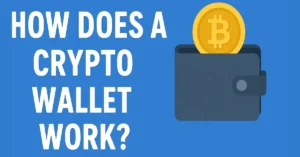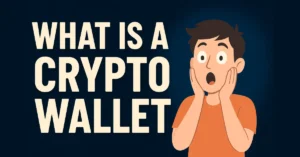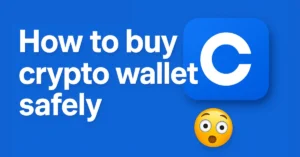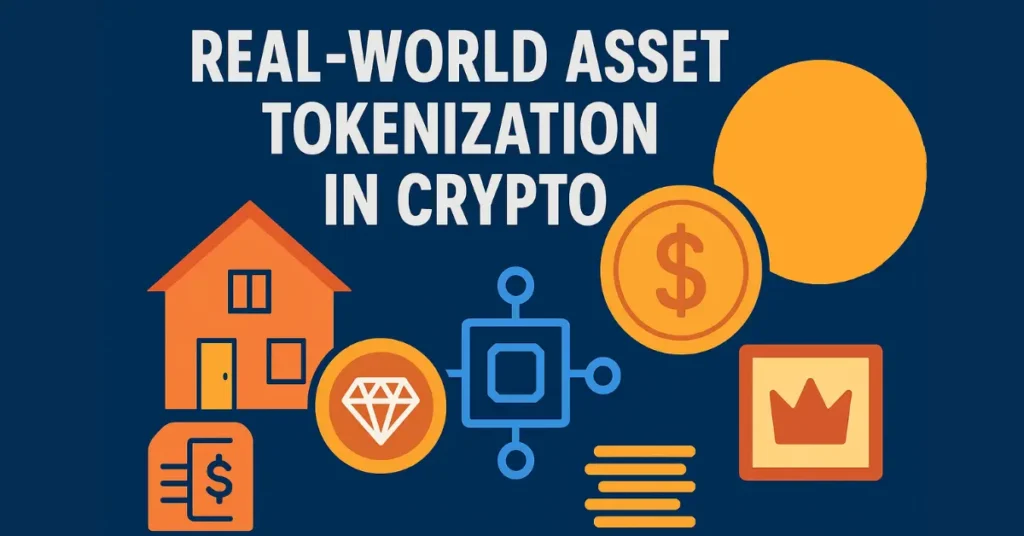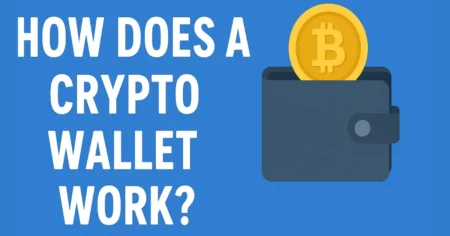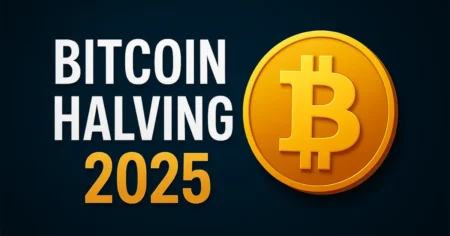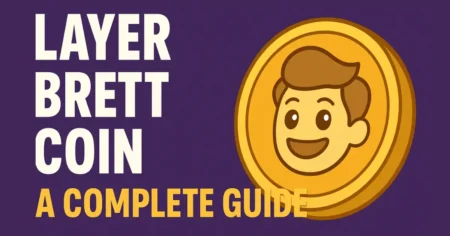What is Real World Asset Tokenization in Crypto
Introduction to Real-World Asset Tokenization in Crypto
The financial world is undergoing a massive transformation. Just as the internet reshaped communication, blockchain is now reshaping how we think about ownership, money, and value transfer. At the heart of this shift is the concept of tokenization, particularly the tokenization of real-world assets. This is not just about buying cryptocurrencies like Bitcoin or Ethereum. It is about representing tangible, physical, and traditional assets—like real estate, commodities, or art—in digital form on a blockchain.
Real-world asset tokenization is a bridge between traditional finance and decentralized finance (DeFi). It creates opportunities for investors, institutions, and even everyday individuals to participate in markets that were once limited to the wealthy or well-connected. For example, instead of needing hundreds of thousands of dollars to invest in prime real estate, tokenization allows fractional ownership, making it possible for someone with just a few hundred dollars to hold a share of that property. This is financial inclusion at a whole new level.
In the United States, where wealth inequality and access to financial products are ongoing issues, tokenization has the potential to open doors for more investors while also increasing liquidity in historically illiquid markets. But while the promise is huge, it is important to understand what it really means and how it works before diving in.
Understanding the Basics of Tokenization
Tokenization might sound complicated, but at its core, it is straightforward. Think of tokenization as converting the rights to an asset into a digital token that lives on a blockchain. These tokens represent ownership or a claim to the underlying asset.
For example, imagine a luxury apartment in New York valued at $10 million. Traditionally, only one buyer—or a small group—would own it. With tokenization, the apartment can be divided into 10,000 tokens, each worth $1,000. This means multiple people can own fractions of the apartment, and these tokens can be traded just like stocks.
This is different from traditional ownership because it adds liquidity and accessibility. Unlike selling a whole property, selling tokenized shares is easier and faster, since the blockchain provides a marketplace for these transactions. Another key difference is transparency. Blockchain records are immutable and verifiable, reducing the risks of fraud or disputes.
Some real-world examples already exist. Platforms have tokenized luxury real estate in Manhattan, gold reserves, and even fine art by Picasso. These cases show how broad the applications can be. The end goal is to bring more efficiency, inclusivity, and trust to global markets.
The Technology Behind Tokenization
Real-world asset tokenization would not be possible without blockchain. Blockchain serves as a decentralized ledger, recording who owns what without the need for intermediaries like banks or brokers. Every transaction is recorded permanently, creating transparency.
Smart contracts—self-executing code on the blockchain—play a crucial role. They handle the rules of ownership, transfer, and compliance. For instance, a smart contract could ensure that only verified investors can purchase certain tokens, aligning with regulatory requirements.
It is also important to distinguish between security tokens and utility tokens. Security tokens represent actual ownership of an asset, like a fraction of a building or a share in a company. Utility tokens, on the other hand, provide access to a product or service but do not represent real-world ownership. Real-world asset tokenization typically uses security tokens because they tie directly to physical or financial assets.
Without blockchain and smart contracts, tokenization would be impossible. They provide the infrastructure, security, and automation needed to make this concept a practical reality.
Types of Real-World Assets That Can Be Tokenized
The scope of tokenization is vast. Almost any asset with measurable value can, in theory, be tokenized.
- Real estate: Commercial buildings, residential properties, and even land parcels can be tokenized. This is one of the most popular areas because real estate is valuable but traditionally illiquid.
- Commodities: Assets like gold, silver, oil, and agricultural products can be digitized. Investors gain easier access to commodity markets without needing physical storage.
- Art and collectibles: Tokenization allows shared ownership of expensive paintings, rare wines, or luxury cars. This turns historically elite markets into more accessible opportunities.
- Financial instruments: Stocks, bonds, and even debt instruments can be represented as tokens, making capital markets more efficient and transparent.
The diversity of tokenizable assets means that the future of this technology could touch nearly every industry. It is not just a crypto experiment but a rethinking of how we buy, sell, and invest in value.
How Real-World Asset Tokenization Works Step by Step
The process of tokenization follows a structured path.
- Identifying and valuing the asset: The first step is determining what asset will be tokenized and how much it is worth. Independent valuations are critical for accuracy.
- Legal compliance: Every jurisdiction, especially the USA, requires compliance with securities laws and investor protection regulations. Tokenization platforms must navigate these legal requirements.
- Creating the token: Developers create a digital token on a blockchain, embedding the rules of ownership and transfer through smart contracts.
- Distribution and trading: The tokens are then sold to investors, often through a platform that complies with local laws. After issuance, tokens can be traded in secondary markets.
This workflow ensures that tokenization is not just about digitization but about creating a legal and financial framework around ownership. When done correctly, it bridges the gap between traditional assets and the efficiency of blockchain systems.
Benefits of Real-World Asset Tokenization
Tokenization offers benefits that go far beyond convenience. It fundamentally changes the way assets are owned, traded, and accessed.
Liquidity creation for illiquid assets
Traditional markets often struggle with liquidity. Real estate, fine art, and private equity are good examples—valuable assets but hard to buy or sell quickly. Tokenization solves this by enabling fractional ownership and allowing tokens to be traded on secondary markets. This means investors no longer need to find a single buyer with millions of dollars. Instead, they can sell their fraction of ownership easily, improving overall market efficiency.
Fractional ownership for wider access
One of the most powerful aspects of tokenization is that it lowers entry barriers. In the United States, investing in prime real estate or rare artwork has historically been reserved for the wealthy. With tokenization, investors can purchase fractions of assets. This democratizes wealth-building opportunities and gives retail investors access to high-value markets once reserved for the elite.
Lower costs and faster transactions
Blockchain reduces the need for intermediaries such as brokers, banks, and custodians. This lowers transaction fees and speeds up settlements. For instance, real estate deals that might take months to close can be tokenized and transferred in days. The cost efficiency attracts both investors and issuers looking to streamline financial processes.
Transparency and trust through blockchain
Blockchain records every transaction permanently. Investors can verify ownership records, past transactions, and compliance with rules. This transparency reduces fraud and builds trust between parties who might otherwise hesitate to transact.
In short, tokenization combines accessibility, speed, cost savings, and trust. These advantages explain why institutions and startups alike are exploring tokenized financial products as the next frontier in investing.
Challenges and Risks in Tokenization
Despite its promise, tokenization faces obstacles that cannot be ignored.
Legal and regulatory uncertainty
The biggest challenge is regulation. In the USA, the SEC treats many tokenized assets as securities, which means compliance with strict rules. However, the global regulatory environment remains fragmented. This creates uncertainty for investors and companies trying to launch tokenization projects.
Security vulnerabilities
While blockchain itself is secure, the platforms built on top of it are not always flawless. Hacks, smart contract bugs, and cyberattacks are risks that could cause investors to lose money. Investors must evaluate the security protocols of any platform they use.
Market adoption and trust issues
Widespread adoption depends on public trust. Many people still view crypto-related innovations with skepticism, especially after high-profile frauds and bankruptcies in the industry. Tokenization needs proven track records and institutional adoption to overcome this perception.
Valuation and pricing complexities
Assigning fair market value to a tokenized asset is more complex than it seems. Unlike public company shares, which trade daily and provide market signals, tokenized assets may lack active trading markets. This makes price discovery challenging and could discourage investors.
Tokenization has immense potential, but the road ahead requires solving these regulatory, technical, and perception challenges.
Regulatory Landscape in the USA
For tokenization to thrive in the USA, it must navigate a strict regulatory environment.
SEC and tokenized securities
The U.S. Securities and Exchange Commission (SEC) considers most tokenized real-world assets as securities. This means they must follow securities laws regarding registration, disclosures, and investor protections. Platforms offering tokenized assets without SEC compliance risk legal action.
Taxation considerations
Investors in the USA must also consider tax implications. Selling tokenized assets may trigger capital gains taxes, just like selling traditional investments. The IRS has issued guidance on digital assets, but tax treatment for tokenized securities remains an evolving area.
The difference between the USA and other jurisdictions
Compared to countries like Switzerland or Singapore, the USA has a more conservative and complex regulatory stance. While this slows innovation, it also provides investor protections. In contrast, jurisdictions with looser rules have seen rapid growth but also higher risk of fraud and failure.
For American investors, compliance and safety remain top priorities. Tokenization projects in the USA must be built with regulation at the center, or they will struggle to survive.
Real-World Use Cases of Tokenization
Tokenization is not just theoretical—it is already happening.
Tokenized real estate platforms
Several platforms allow investors to buy fractional shares of commercial and residential real estate. For example, tokenization of high-value apartments in Manhattan has allowed multiple investors to own portions of prime real estate that would otherwise be out of reach.
Tokenized commodities trading
Gold is one of the earliest assets to be tokenized. Instead of holding physical gold bars, investors can purchase tokens representing ownership of securely stored gold reserves. This removes the need for storage and simplifies transactions.
Tokenized investment funds
Funds are also being tokenized to allow investors to buy shares with greater flexibility. This increases accessibility to private equity and venture capital markets, traditionally reserved for institutions and high-net-worth individuals.
Tokenized luxury goods and collectibles
Rare items like luxury cars, vintage wines, and famous artworks have been tokenized to allow multiple investors to share ownership. This opens up niche markets to global audiences who would never have been able to access them otherwise.
These examples show tokenization is more than a concept—it is already reshaping how assets are traded and owned.
The Future of Real-World Asset Tokenization
The long-term future of tokenization looks promising, though it depends on regulatory clarity and adoption.
Growing adoption by institutions
Financial giants like BlackRock and JPMorgan are exploring tokenized investment products. Institutional interest is a strong signal that tokenization is not a fad but a potential pillar of the financial system.
Role of stablecoins and CBDCs
Stablecoins and central bank digital currencies (CBDCs) may complement tokenization by providing stable mediums of exchange. This would make buying and selling tokenized assets faster, cheaper, and more reliable.
Cross-border opportunities
Tokenization could solve one of the biggest problems in finance: cross-border transactions. Blockchain makes it easier to invest in assets outside one’s country, opening new opportunities for diversification.
If tokenization reaches mainstream adoption, it could make global investing as easy as buying stocks online today.
How to Invest in Tokenized Real-World Assets
For U.S. investors curious about tokenization, the process requires both caution and strategy.
Choosing reliable platforms
The first step is finding trustworthy platforms. Look for companies regulated under U.S. law or those with strong compliance frameworks. Platforms should provide transparent information about the underlying assets, storage methods, and legal structures. Avoid projects that lack independent audits or legal clarity.
Due diligence and risk management
Treat tokenized assets like any other investment. Conduct due diligence on the asset itself—whether it is real estate, art, or commodities. Verify that the asset exists, is properly valued, and has clear ownership. Consider the risks of the blockchain platform too, including cybersecurity and liquidity risks.
Long-term vs. short-term strategies
Some tokenized assets may provide regular income, such as rental yields from tokenized properties. Others may be speculative, relying on appreciation. Investors should match their strategy to their risk tolerance. Tokenized assets are still new, so long-term strategies may prove more stable while short-term trading remains volatile.
The key is to balance innovation with caution—participating in tokenization without overexposing yourself to risk.
Comparing Tokenization With Traditional Investment Methods
Tokenization is often compared to traditional investing, but the differences are significant.
Liquidity differences
Traditional assets like real estate and fine art are illiquid, meaning they take time and effort to sell. Tokenization changes this by creating fractional shares that can be traded quickly on blockchain platforms. Liquidity is one of the strongest advantages of tokenization.
Accessibility and inclusion
In the traditional system, barriers like high minimum investments and complex paperwork lock out average investors. Tokenization lowers these barriers, allowing anyone with internet access and a modest amount of capital to participate. This is especially relevant in the U.S., where income inequality makes access to wealth-building assets uneven.
Cost and efficiency advantages
Traditional investing involves intermediaries—brokers, custodians, banks—that charge fees and slow down processes. Blockchain automates much of this through smart contracts, reducing both costs and transaction times. For example, buying a tokenized property can take days, while a traditional property transaction might drag on for months.
Tokenization does not replace traditional investing but improves on it by offering more efficiency, speed, and inclusivity.
Potential Impact on the Global Economy
If tokenization continues to grow, its economic impact will be significant.
Democratizing access to wealth-building assets
By lowering barriers, tokenization could give millions of small investors access to assets previously reserved for the rich. This could narrow wealth gaps, especially in countries like the U.S. where access to financial tools is uneven.
Increasing efficiency in financial markets
Financial systems thrive on liquidity and transparency. Tokenization injects both into traditionally slow, opaque markets. This could make capital markets more efficient, reduce transaction costs globally, and attract more investment.
Challenges for governments and regulators
Governments will face challenges balancing innovation with investor protection. While tokenization could drive growth, it also creates risks of fraud, money laundering, and systemic instability. Regulators must adapt quickly, or the industry may grow outside their control.
The economic consequences of tokenization could reshape not only investing but also how global wealth is distributed.
Common Misconceptions About Tokenization
Like most innovations, tokenization faces misunderstandings.
Tokenization is not the same as cryptocurrency
Owning a tokenized asset is not the same as owning Bitcoin. Tokenized assets represent ownership of something tangible, like a house or a bar of gold. Cryptocurrencies like Bitcoin do not represent external assets—they are digital currencies themselves.
Not all assets are suitable for tokenization
While nearly anything of value can theoretically be tokenized, some assets are not practical candidates. Perishable goods, assets with uncertain legal ownership, or assets with low demand may not benefit from tokenization.
Tokenization does not eliminate risk
Some investors assume tokenized assets are safer because they are on a blockchain. This is not true. Market risk, regulatory risk, and platform security issues remain. Tokenization may reduce some risks, like fraud in ownership records, but it does not remove all forms of risk.
Clearing up these misconceptions is essential for investors to understand what tokenization truly offers.
Conclusion
Real-world asset tokenization represents one of the most exciting intersections of traditional finance and blockchain technology. By digitizing ownership of physical and financial assets, it enables liquidity, accessibility, and transparency in ways the old system could not.
In the United States, where regulatory frameworks are strict, adoption may be slower but more secure. Tokenization has already moved beyond theory, with real estate, commodities, and luxury goods entering the market. The future will depend on regulation, institutional adoption, and the development of secure, trustworthy platforms.
For investors, tokenization opens new opportunities but also requires careful due diligence. Like any emerging financial technology, it carries risks, but the potential benefits are too significant to ignore. If done correctly, tokenization could transform not just how we invest, but who gets to participate in global wealth creation.
FAQs
How is tokenization different from traditional investing?
Tokenization allows fractional ownership and blockchain-based transfers, making traditionally illiquid assets more accessible and liquid compared to traditional methods.
Is real-world asset tokenization legal in the USA?
Yes, but most tokenized assets are treated as securities by the SEC, meaning they must comply with strict regulations.
What assets are best suited for tokenization?
High-value but illiquid assets like real estate, commodities, art, and private equity are most suitable.
Can small investors benefit from tokenized assets?
Yes, tokenization lowers entry barriers, allowing small investors to access high-value markets through fractional ownership.
What risks should investors watch out for?
Investors should consider regulatory uncertainty, platform security, liquidity issues, and valuation challenges.
Also, read
- What is a crypto wallet, and how does it work? – Coinsify
- 10 Crypto Terms Every Beginner Must Know: Coinsify
- What is blockchain technology? Complete Guide – Coinsify
- How to Buy Crypto Safely in 2025: Complete Guide – Coinsify
- Bitcoin vs Ethereum: Key Differences Explained: Complete Guide
- Ultimate Blockchain Glossary: Learn Blockchain Terms Easily
- How to Buy Bitcoin Safely (Complete Beginner’s Guide)
